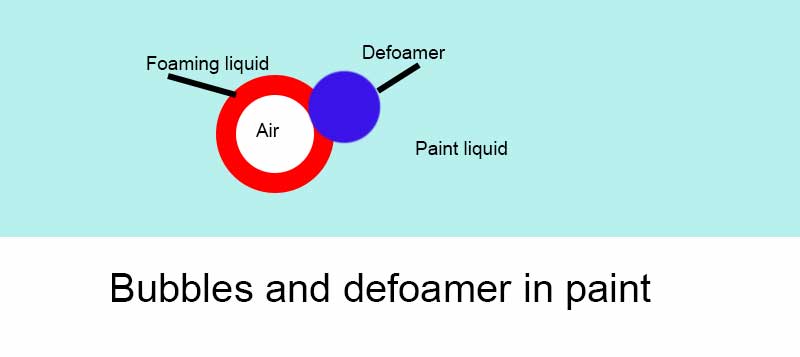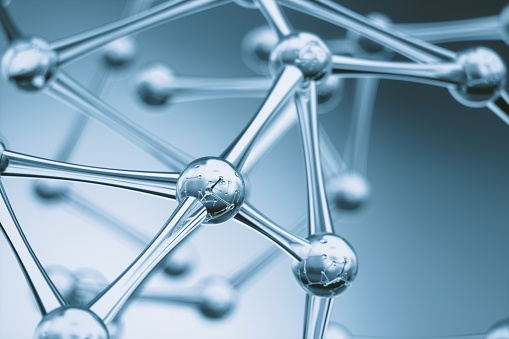Picking the Right Defoamer for Your Certain Application Demands
Selecting the suitable defoamer for specific application demands is a nuanced procedure that requires cautious consideration of several aspects, such as the foam type, operating, and tool conditions. Recognizing the nuances of defoamer performance-- consisting of speed and perseverance-- while also accounting for regulatory and environmental elements is essential.
Understanding Foam Development
Foam development occurs when gas is caught within a fluid, creating a steady structure of bubbles. This phenomenon can considerably influence various commercial procedures, specifically in sectors such as food manufacturing, drugs, and wastewater therapy. The existence of foam can hinder mixing, decrease item top quality, and also bring about operational ineffectiveness.
Foam usually forms as a result of a combination of elements, consisting of surface-active representatives, agitation, and the features of the fluid phase. Surfactants lower the surface area stress of the liquid, promoting the development of bubbles that can coalesce and stabilize. Frustration, whether from mechanical mixing or gas intro, improves bubble formation, resulting in enhanced foam volume.
Comprehending the auto mechanics of foam formation is vital for sectors intending to enhance their procedures. By identifying the specific problems that promote foam generation, companies can execute methods to minimize its results. This expertise prepares for picking appropriate defoaming agents that efficiently target the special difficulties presented by foam in various applications. A detailed understanding of foam formation is important for improving performance and preserving product stability throughout numerous markets.
Kinds of Defoamers Available
Different kinds of defoamers are offered to attend to the challenges postured by foam in industrial applications. defoamers. Extensively categorized, defoamers fall under 3 groups: silicone-based, non-silicone-based, and all-natural defoamers
Silicone-based defoamers are renowned for their effectiveness and stability throughout a wide range of temperature levels and pH degrees. They are normally used in applications where strong foam reductions is required, such as in finishes, adhesives, and paints. Their low surface stress enables fast foam collapse.
Non-silicone-based defoamers, frequently made from natural compounds, provide an option for applications conscious silicone residues. These defoamers can be additional split right into polyether and ester kinds, each tailored to satisfy certain solution needs. Non-silicone defoamers are regularly used in food processing and personal care items due to their compatibility with various formulations.
Natural defoamers, stemmed from plant or animal sources, are gaining grip as a result of their environment-friendly account. These items are specifically appealing in applications where regulatory compliance and sustainability are critical, such as in agrochemicals and biotechnology.
Selecting the appropriate sort of defoamer is important for enhancing performance and making sure compatibility with details applications.
Trick Application Factors To Consider
When choosing a defoamer, it is vital to take into consideration the details application demands to guarantee optimum performance. defoamers. Different sectors have distinctive demands, such as food handling, drugs, or wastewater therapy, and each application may require one-of-a-kind defoaming properties
Trick aspects to examine consist of the tool in which the defoamer will be used, whether it is water-based, oil-based, or a mix thereof. The temperature level and pH degrees of the application can additionally significantly influence the efficiency of a defoamer. In addition, compatibility with other chemicals existing in the system is vital to protect against negative reactions that could compromise efficiency.
Another crucial factor to consider is the lathering actions of the certain system. Understanding whether the foam develops quickly or slowly can guide the choice of a defoamer that targets the root cause properly. The desired rate of defoaming can influence the choice, as some applications need quick action while others may tolerate slower defoaming procedures.
Lastly, governing and ecological considerations should not be overlooked, especially in sectors with stringent compliance demands. More hints Picking a defoamer that aligns with these variables makes certain both effectiveness and safety in the application.

Efficiency Testing Methods
Evaluating the performance of a defoamer requires a systematic strategy to screening that properly determines its effectiveness in certain applications. Numerous efficiency testing approaches can be utilized to determine the optimal defoamer for a given formulation.
One typical method is the bubble test, which reviews the defoamer's ability to minimize foam volume over time. This examination entails creating a secure foam and after that adding the defoamer to observe the rate of review foam collapse. Another technique is the dynamic foam examination, where foam is created under regulated conditions to simulate real-world application circumstances. This technique supplies understandings into just how the defoamer does under differing shear conditions.

Eventually, selecting the proper efficiency screening approach relies on the particular application and the kind of foam being addressed. Each technique offers important data that can direct formulation modifications and enhance the effectiveness of the defoamer in functional applications.
Best Practices for Option


Next, think about the defoamer's efficiency in regards to speed of activity and perseverance. A quick-acting defoamer may be essential for procedures where rapid foam suppression is important, while an extra relentless solution may be required for long term foam control. In addition, assess the environmental influence of the defoamer, including its biodegradability and any type of regulative compliance demands.
Conduct trials with selected defoamers to identify their efficiency in real-world conditions. This visit homepage step is vital to verify that the chosen product fulfills efficiency assumptions. Last but not least, consult with suppliers or vendors for technical assistance and support, as they can supply useful insights right into item formulas and application techniques. By sticking to these finest practices, you can boost foam control effectiveness and ensure the long life of your procedures.
Conclusion
In summary, picking the suitable defoamer demands a detailed examination of various factors, including foam kind, tool, operating problems, and ecological considerations. Recognizing the special qualities of foam formation and the readily available defoamer options is crucial. Furthermore, employing efficient efficiency testing techniques and adhering to ideal practices during the option process will enhance the likelihood of accomplishing optimal defoaming outcomes. Eventually, a knowledgeable selection approach will resolve specific application requirements and alleviate foaming challenges properly.
Selecting the suitable defoamer for specific application needs is a nuanced process that demands cautious factor to consider of several factors, such as the foam operating, medium, and type conditions.Selecting the ideal defoamer is crucial for attaining ideal efficiency in foam control applications. A quick-acting defoamer may be needed for processes where fast foam suppression is important, while a more relentless formulation could be required for extended foam control.In summary, picking the suitable defoamer requires a detailed analysis of numerous factors, including foam type, medium, operating conditions, and environmental considerations. Understanding the unique features of foam development and the readily available defoamer options is important.